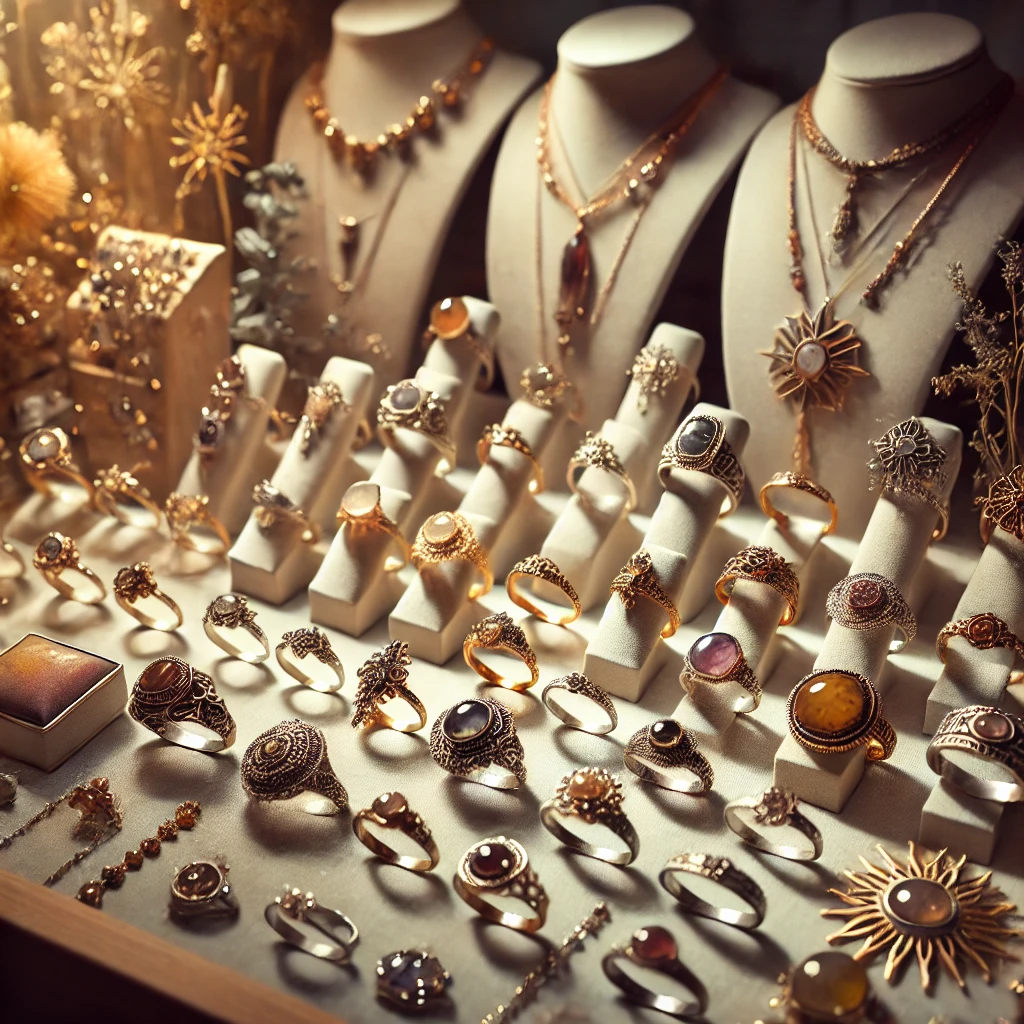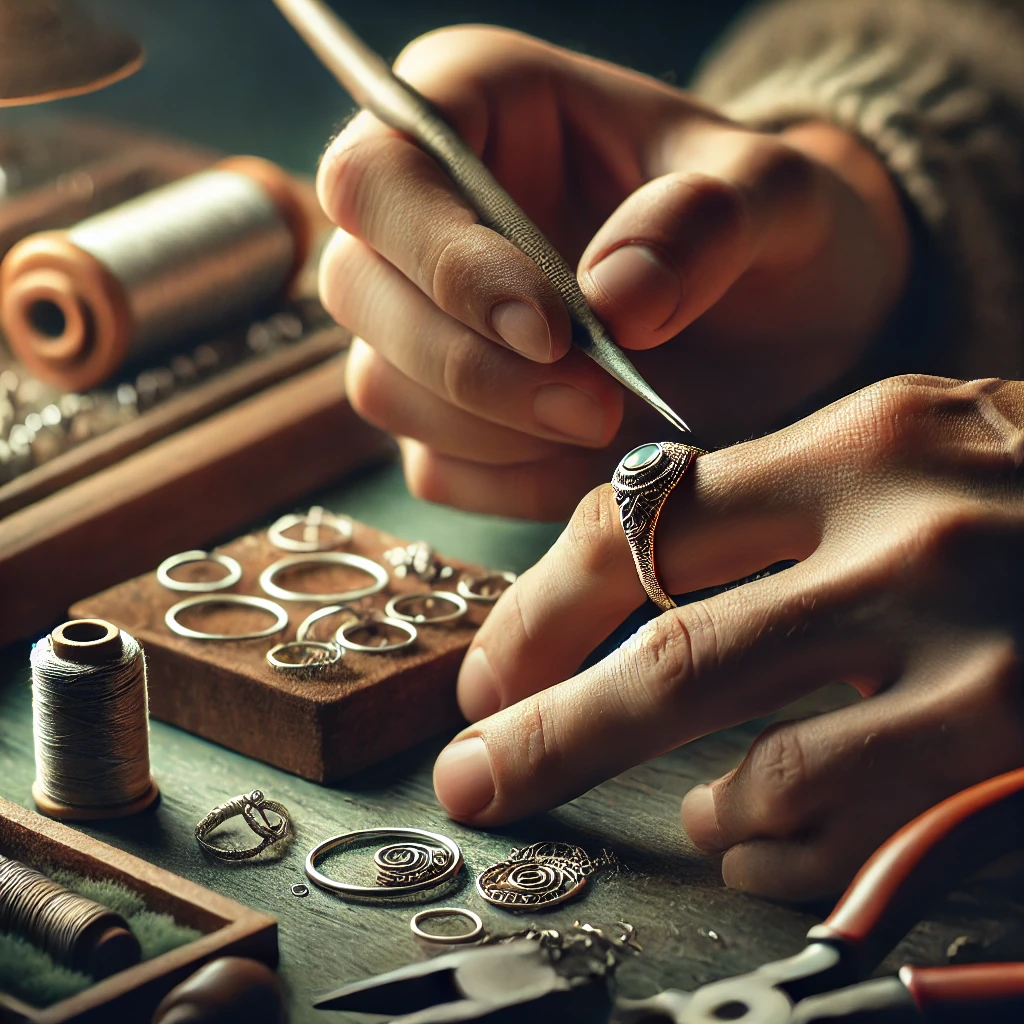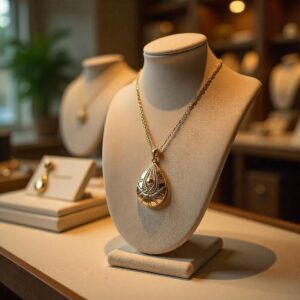The world of jewellery is not solely defined by glittering gemstones and precious metals; at its heart lies the artistry, passion, and meticulous craftsmanship of dedicated artisans. Jewellery crafting is an ancient tradition that has evolved over thousands of years, yet its essence remains rooted in creativity, skill, and personal expression. In an age dominated by mass production, the allure of artisan jewellery—with its unique, handmade designs—has made a remarkable resurgence. This celebration of craftsmanship is not just about aesthetics; it’s about honouring the individuals who pour their hearts and souls into every piece, transforming raw materials into wearable works of art.
Artisan jewellery tells stories—stories of cultural heritage, personal journeys, and timeless traditions passed down through generations. Unlike factory-made pieces that prioritize uniformity, handmade jewellery carries an intrinsic charm because no two pieces are exactly alike. Each creation reflects the artisan’s vision, emotions, and dedication to their craft. The rise of artisan jewellery has been fueled by a growing appreciation for authenticity and individuality, as more people seek meaningful connections to the items they wear. Jewellery, after all, is deeply personal; it symbolizes love, milestones, and cherished memories. This is especially evident in Valentine’s Day jewellery, where people increasingly favor personalized, handcrafted pieces that resonate with emotion and significance.
The process of crafting artisan jewellery is both intricate and labor-intensive. It begins with the conceptualization of a design, often inspired by nature, history, or personal experiences. Artisans sketch their ideas, envisioning how different materials will harmonise. The selection of materials is a critical step—ethically sourced gemstones, recycled metals, and sustainable components are often chosen to reflect not only beauty but also a commitment to responsible craftsmanship. Once the design is finalized, the true magic begins. Artisans employ traditional techniques such as hand-forging, wire wrapping, stone setting, and metal casting. These methods require years of practice to master, and every hammer strike, soldered joint, and polished surface tells a story of patience and precision. Unlike automated processes, the human touch imbues each piece with character, making it uniquely special.

The diversity within artisan jewellery is astonishing. Some artisans specialize in delicate filigree work, where fine threads of metal are intricately woven into lace-like patterns. Others excel in repoussé, a technique where metal is shaped and embossed to create raised designs. In regions like India and the Middle East, artisans preserve ancient traditions of Kundan and Meenakari—jewellery styles rich with vibrant enamels and elaborate gemstone settings. In contrast, contemporary artisans often experiment with mixed media, blending metals with unconventional materials like wood, resin, or even textiles, pushing the boundaries of traditional jewellery design.
A crucial aspect of artisan jewellery is its cultural significance. Across the globe, jewellery has been a marker of identity, status, and heritage. In African communities, beadwork is not just decorative but a language in itself, with colors and patterns conveying messages about the wearer’s tribe, age, and social standing. In Native American cultures, turquoise jewellery crafted by Navajo, Hopi, and Zuni artisans holds spiritual significance, symbolizing protection, health, and connection to the natural world. In Japan, the art of Mokume-gane—a technique that creates wood-grain patterns in metal—is a testament to the Japanese aesthetic of wabi-sabi, celebrating beauty in imperfection.
As we embrace modern trends, handmade designs continue to captivate for their authenticity. Minimalist jewellery with clean lines and understated elegance reflects contemporary tastes, yet even these pieces often carry subtle nods to traditional craftsmanship. Artisans are not confined by fleeting trends; instead, they create timeless designs that transcend generations. The growing popularity of Valentine’s Day jewelry crafted by artisans is a testament to this. Rather than opting for mass-produced items, many choose bespoke pieces—custom-engraved rings, hand-stamped pendants, or bracelets with meaningful symbols—to express their love in a unique, heartfelt way.
The journey of an artisan is often one of passion over profit. Unlike large-scale manufacturers focused on volume and speed, artisans invest time, emotion, and meticulous attention into each creation. Their workshops are spaces of both tradition and innovation, where ancient techniques coexist with modern tools. The tools themselves—hammers worn smooth by years of use, anvils marked by countless projects—are part of the artisan’s story. In these humble settings, magic happens, and raw materials are transformed into heirlooms.
One of the most beautiful aspects of artisan jewellery is the connection between the maker and the wearer. Purchasing a handcrafted piece often comes with a story—about the artisan’s inspiration, the materials used, and the creative process. This connection fosters a deeper appreciation for the jewellery, elevating it from a mere accessory to a treasured artifact imbued with meaning. In recent years, social media and online platforms have empowered artisans to share their craft with a global audience. Platforms like Instagram, Etsy, and independent websites allow artisans to showcase their work, connect directly with customers, and build communities that value sustainable and ethical craftsmanship. This digital evolution has breathed new life into traditional crafts, allowing artisans to thrive beyond local markets.
Sustainability is another cornerstone of modern artisan jewellery. As consumers become more environmentally conscious, artisans are leading the way in ethical practices. Many prioritize using recycled metals, conflict-free gemstones, and eco-friendly packaging. By sourcing materials responsibly and minimizing waste, artisan jewellers contribute to a more sustainable future for the industry. This ethical approach resonates strongly, especially when it comes to gifting occasions like Valentine’s Day. A handmade piece crafted with care for both the wearer and the planet embodies love in its purest form.
Artisan jewellery also serves as a powerful medium for social change. Many communities around the world rely on traditional crafts for their livelihoods. Supporting artisan jewellery means supporting local economies, preserving cultural heritage, and empowering artisans—many of whom are women—through fair trade practices. Initiatives that promote artisan cooperatives in regions like South America, Africa, and Southeast Asia help create sustainable income opportunities while keeping ancient crafts alive.
The art of jewellery crafting is not limited to professionals alone. The growing interest in DIY jewellery-making workshops reflects a broader appreciation for the craft. These workshops offer people a chance to experience the joy of creating something with their own hands, fostering a deeper respect for the skill and effort that goes into every handmade piece. The tactile process of working with metals, stones, and tools creates a connection between the creator and the material, a connection that is often lost in mass production.
As we celebrate the art of jewellery crafting, it’s essential to recognize the emotional resonance that artisan pieces carry. Whether it’s a ring passed down through generations, a pendant gifted on a special occasion, or a bracelet bought as a personal talisman, handmade jewellery holds memories and emotions within its design. This emotional depth is why Valentine’s Day jewellery crafted by artisans holds such profound meaning. It’s not just a gift; it’s a symbol of love, thoughtfulness, and connection.
In conclusion, the world of artisan jewellery is a vibrant tapestry woven with history, culture, and creativity. It celebrates the human spirit—the ability to transform simple materials into objects of beauty and significance. As we continue to seek authenticity in the things we wear and cherish, artisan jewellery stands as a testament to the enduring power of craftsmanship. It’s more than just adornment; it’s a celebration of artistry, tradition, and the stories that connect us all.





